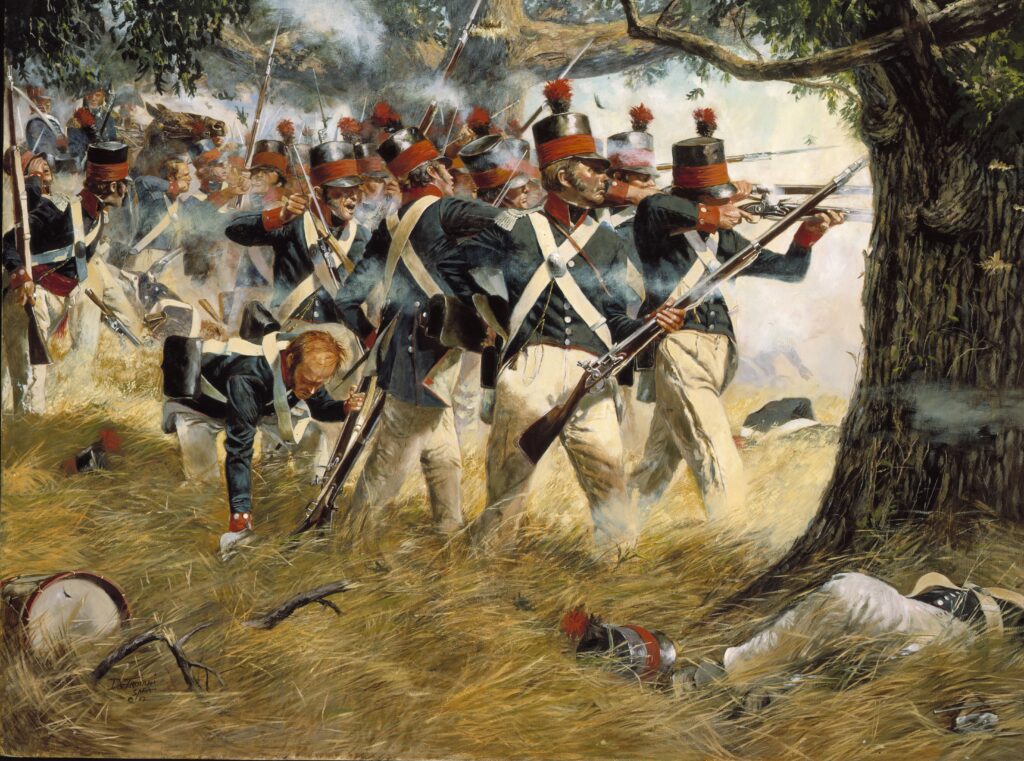Every American is familiar with the words of Francis Scott Key’s epic poem-turned song-turned national anthem.
“Whose broad stripes and bright stars through the perilous fight, O’er the ramparts we watch’d, were so gallantly streaming?”

As we stand there, listening to the words while waiting for our football or baseball game to start, it likely doesn’t occur to us just how miraculous it was for the broad stripes and bright stars to still be gallantly streaming that morning in September 1814. At the outset of the battle, things looked pretty grim for the Americans.
The Siege of Fort McHenry: Inspiration for Our National Anthem
When the War of 1812 began, Britain was fighting a defensive war, mainly because it was focused on defeating Napoleon in Europe. When Napoleon was exiled to Elba in May 1814, the Royal Navy was free to take the offensive – and it did, in a big way.
The U.S. saw success in the Great Lakes and against Britain’s American Indian allies, but the Royal Navy controlled the oceans. They reinforced Canada and pushed the Americans out of Ontario, captured what is today Maine (it was still part of Massachusetts during the war), and sent an expedition of 5,000 Redcoat veterans of the war in Europe to the Chesapeake Bay.
British Attack on Baltimore and Fort McHenry
British troops landed in August 1814, swiftly defeating opposition to their landing, then defeating the Americans at Bladensburg, Maryland, before burning Washington, D.C., and capturing Alexandria. They then set their sights on Baltimore, a much more appealing target, given its importance as a major port city.

The British would attack by land and by sea, with the seaborne invasion striking Fort McHenry, Baltimore Harbor’s primary defense. When they arrived at Baltimore, they found the road to the city blocked by 10,000 Americans and 100 guns, a much more powerful defense than they anticipated. The British needed to reduce Fort McHenry to provide naval gunfire for the attacking land forces.
On the morning of Sept. 13, 1814, a British task force of 19 warships began a bombardment of the fort. Heavier ships can’t approach Fort McHenry because of the shallow waters, so only the bomb ships can get close enough to fire exploding mortars and Congreve rockets – these Francis Scott Key’s “bombs bursting in air” and “rockets’ red glare.”

Key was a lawyer from a wealthy family who became an agent for prisoners of war held after the burning of Washington. He was aboard the HMS Tonnant, flagship of Vice-Admiral Sir Alexander Cockburn, commander of British forces in North America. Key dined with the admiral to negotiate the release of an elderly prisoner who was a family friend but would remain aboard during the Battle of Baltimore, watching the Siege of Fort McHenry.

The heavier ships would eventually exchange cannon fire with the guns of Fort McHenry but would also veer off out of range. The battle over the fortress would go on for 27 hours, even amid a heavy rainstorm, as 1,500 shots were fired between the two sides. The British would even launch a land-based diversionary attack in an attempt to draw fire away, but it, too, would fail.
When morning finally came, the Americans were still in control of the fort, which was still in fighting shape. They lowered their storm flag and raised the massive flag they used every morning for reveille, specially made by a local flag maker named Mary Pickersgill. This was likely the “broad stripes and bright stars” Key saw at the twilight’s last gleaming.
Since the Royal Navy couldn’t break Fort McHenry, the British were forced to abandon their assault on Baltimore, sparing it the same fate as Washington. Their next stop would be certain defeat at the Battle of New Orleans.
Read About Other Battlefield Chronicles
If you enjoyed learning about the siege of Fort McHenry, we invite you to read about other battlefield chronicles on our blog. You will also find military book reviews, veterans’ service reflections, famous military units and more on the TogetherWeServed.com blog. If you are a veteran, find your military buddies, view historic boot camp photos, build a printable military service plaque, and more on TogetherWeServed.com today.

0 Comments